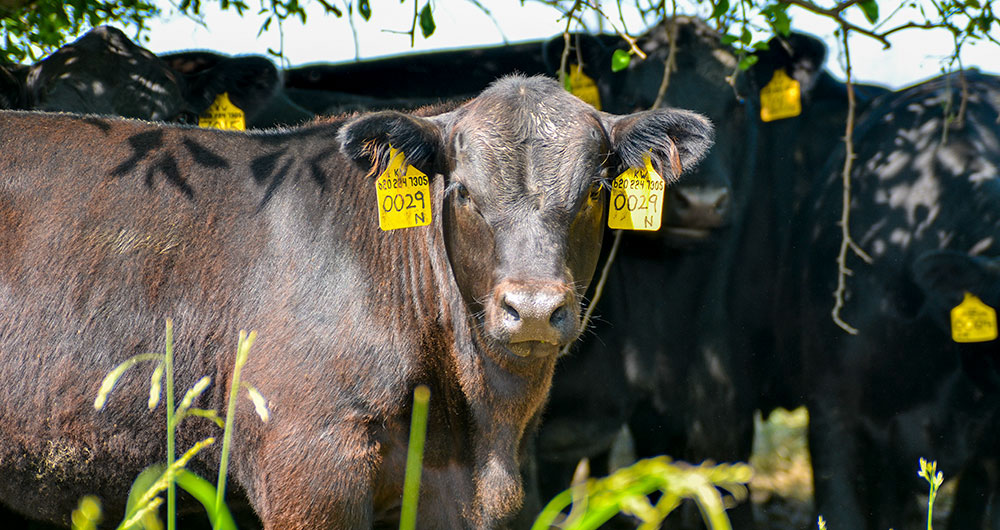
Heat Research
Research looking at heat stress in Angus cattle.

by Heather Smith Thomas
Some cattle handle heat better than others, and there is a genetic component to heat tolerance. A number of research projects have looked at this to see if there might be ways to select for more heat-tolerant cattle.
Don Spiers, professor emeritus at University of Missouri, has worked with cattle for many years looking at heat stress. One of his ongoing projects is evaluating the data from a study looking at long-term responses to heat and how cattle adapt through the summer.
“We find that the individuals that do best are the ones that can adapt readily. One of our studies a few years ago was to follow a group of 30 Angus cattle through summer. Temperature transmitters in their rumens told us their body temperature, and we monitored feed intake, etc. We looked at them in early summer (June) and identified a few that were tolerating the heat better than the others in the group,” he says.
“Then we looked at them at the end of the summer to see if they were all still in the same categories (heat tolerant or not heat tolerant). About 50% of the ones that were in the tolerant group had switched to the intolerant group. We need to do more work on identifying the animals that can more readily adapt to temperature, and the ones that would be more at risk because they are slower to adapt or unable to adapt,” says Spiers.
There are differences in individual cattle, but it’s not always easy to find those differences. With all the genomic work done today, he explains, it’s not going to be a single gene because there are many factors that play a role. This involves metabolism, ability to sweat, feed efficiency and other factors that enter into that animal’s ability to handle heat or not.
“Scientists have often talked about this, asking the question: If we could change the animal, what would we change? It comes down to creating an animal that can sweat better and has better feed efficiency — converting less of that feed to heat, and more of the protein and energy to muscle. That’s going to take a large study,” he says.
For many years some breeders tried to select for animals that would do better in the heat, but the problem is that when you create an animal that is heat-tolerant, it is also cold-sensitive. This is why some breeds do better in the heat of southern climates and others do better in cooler climates. If you gain something in one trait, you often lose something somewhere else, he reminds.
“What we need to find is the animals that are adaptable and resilient. Being feed-efficient and able to sweat well are some of the things we have to look at. You can’t really mess with metabolism very much,” he says.
Long-term studies where the performance of these cattle is evaluated over many months are also needed.
“If you look at the literature, scientists have maybe done a study for a couple weeks or so, and that is not enough time. We have environmental chambers here at the University of Missouri, and we’ve done hundreds of studies over the past decades and published them, but what do these results really mean? How do they apply to animals out in the real world?” he asks.
Editor’s note: Heather Smith Thomas is a cattlewoman and freelance writer from Salmon, Idaho. Photo by Kasey Brown.























